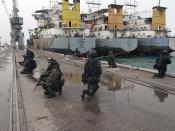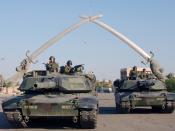So it embarks. Soft-targets scattering ubiquitously, the deafening explosions and the blazing of light in the gloomy night. Slowly, the gory images of war begin emerging to our minds, reminiscing what war is like; remembering that 'the first casualty of war is truth' - a cliché 'often uttered but never learned'.
John Pilger, a journalist for The Daily Mirror - a London tabloid that is not in favour of the war in Iraq, reported that war has murdered naïve children. Shortly after a missile attack, Pilger strolled along the path. He met the father of two sisters killed in the attack. Pilger stated that 'these two little girls were left intact...their bodies perfectly engraved in the rubble of their homes....they had been bombed, to death, murdered, in their beds'.
Over the past century, all the time, the media coverage of war has been analyzed by the government as well as the public.
As technology advanced, the styles of media coverage have evolved from a sole emphasis on print to more complex photography and videos. With this development, comes a changing perception of the ideas of war in today's modern world. Therefore, war coverage has since been the most dynamic example of how technology has influenced the power of the media and in turn, affected the public awareness.
In the past wars, World War II for instance, the public received their information about the war from newspaper reports and radio broadcasts. They were allowed to form their image of war in their own minds. Thus, they were not confronted with the actual vivid imagery of the battle and bloodshed of the conflict. In addition, in those days, the media revealed the war in a more positive and heroic manner. Consequently, this helped create harmony in the public in support of the...


